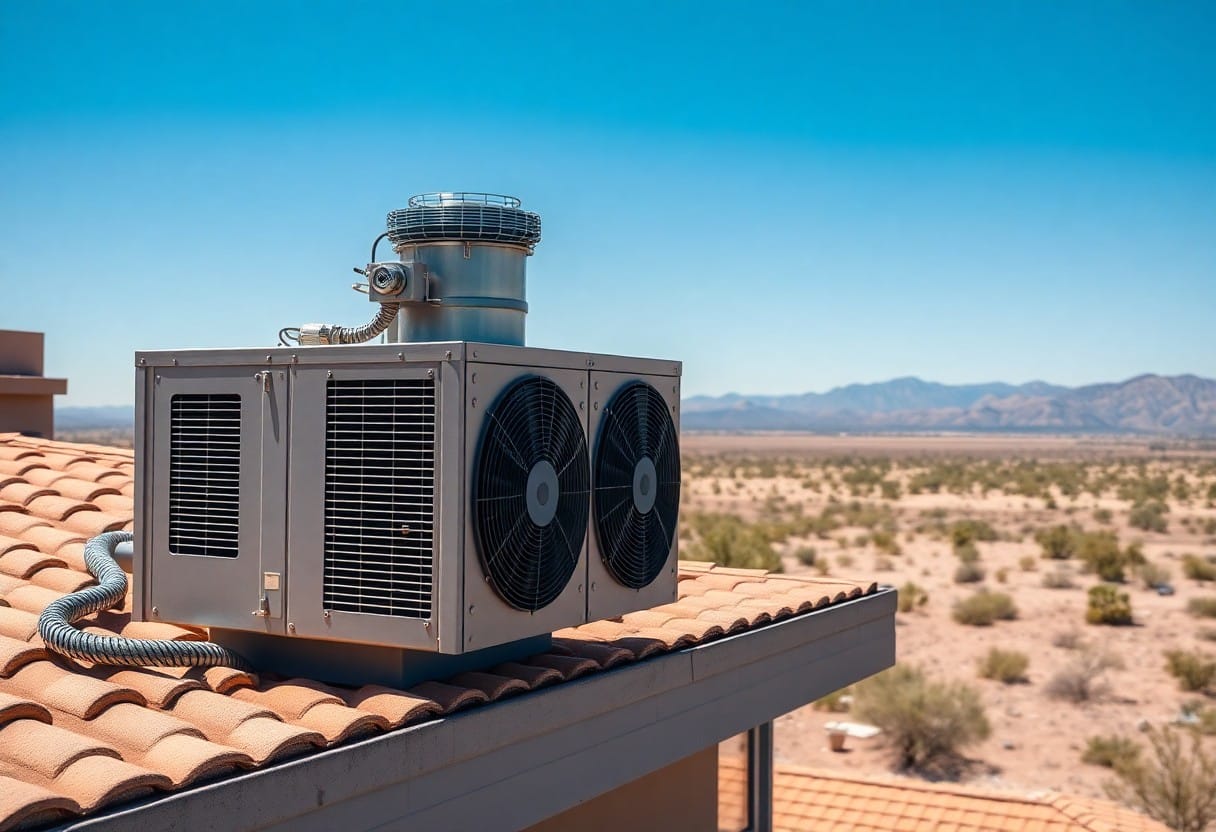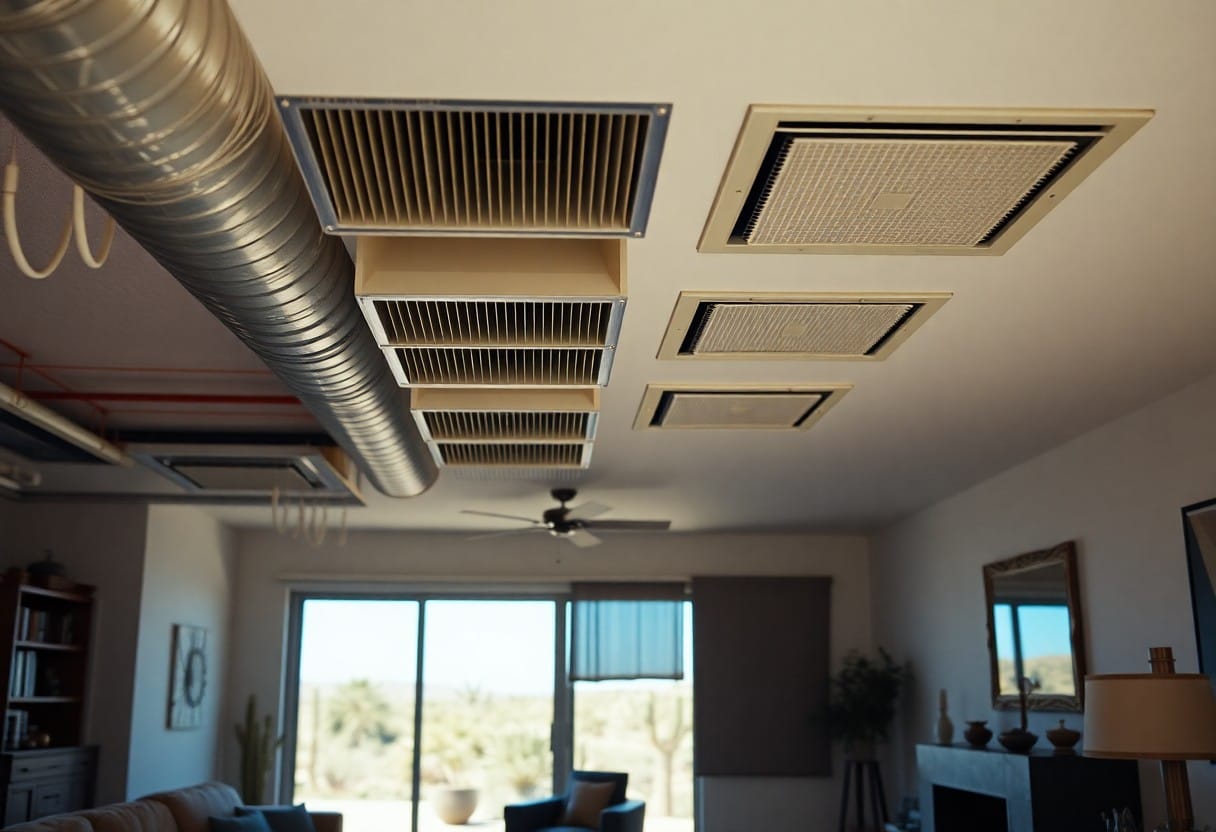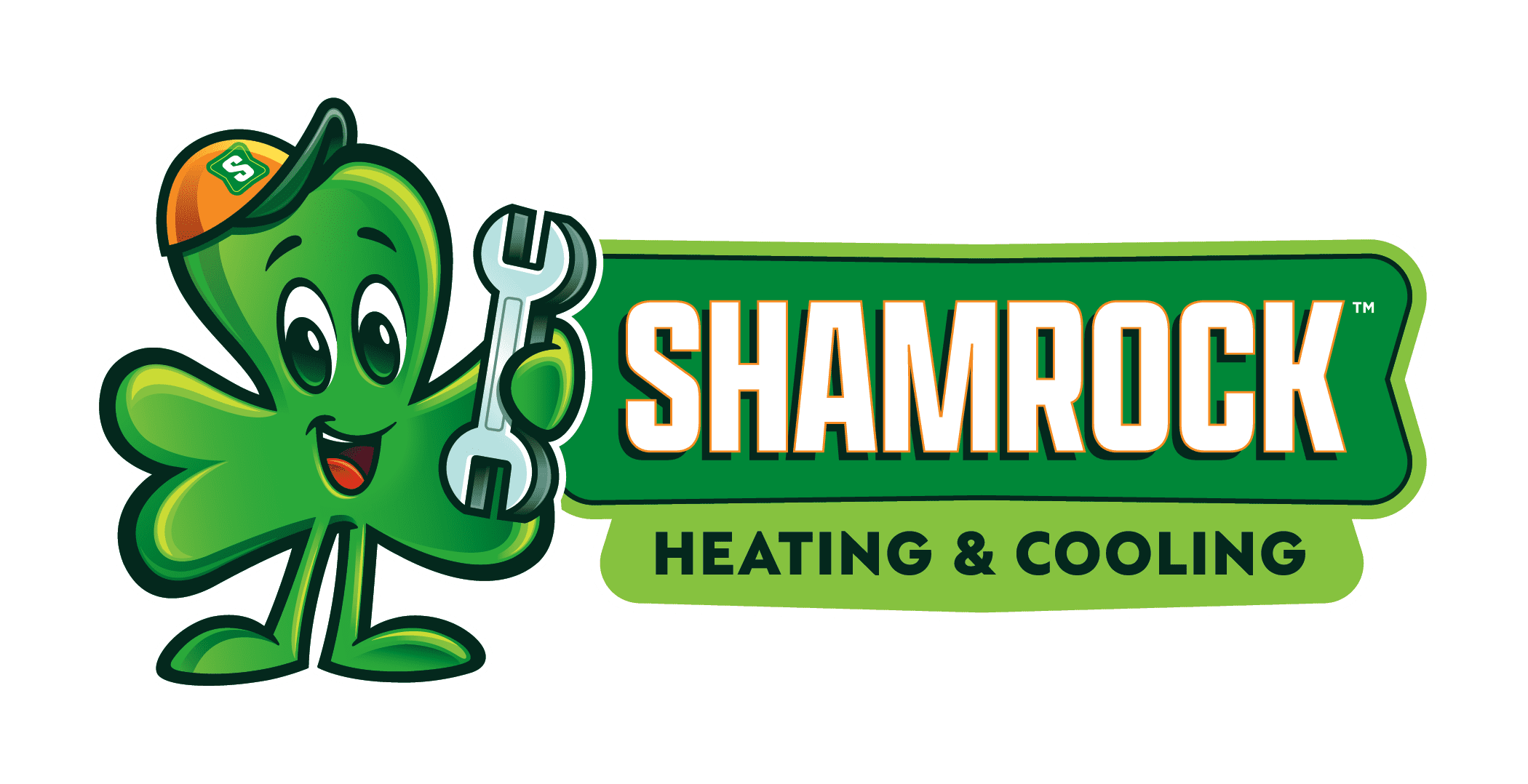Just as the desert climate of Phoenix poses unique challenges, your indoor air quality can significantly impact your health and comfort. With high levels of dust, allergens, and pollutants prevalent in the region, implementing a whole-house air purification system is necessary for creating a clean, safe living environment. These systems not only filter out harmful particles but also improve overall air circulation, enhancing the quality of the air you breathe every day.
Understanding Air Quality in Phoenix
Common Pollutants in Desert Air
The air quality in Phoenix is often compromised by a variety of pollutants. Particulate matter, such as dust and pollen, is prevalent due to the arid environment, particularly during the spring months. Ozone levels can also be high, especially during the hot summer months, leading to significant health risks. Additionally, pollutants like volatile organic compounds (VOCs) are emitted from vehicle exhaust and industrial activities, further deteriorating air quality. These contaminants can result in an assortment of respiratory issues if not properly managed.
You may also encounter smog, a result of the reaction between sunlight and pollutants, which can significantly reduce visibility and promote a variety of health concerns. Dust storms are another potential issue, capable of transporting particles over great distances, thereby impacting air quality beyond the immediate vicinity. Understanding these factors is crucial for evaluating your air purification needs.
Health Impacts of Poor Air Quality
Exposure to poor air quality can have immediate and long-term effects on your health. Short-term effects include eye irritation, throat discomfort, and increased respiratory symptoms, especially in individuals with existing conditions like asthma or chronic obstructive pulmonary disease (COPD). Prolonged exposure to air pollutants can lead to chronic health issues, including an increased risk of heart disease, reduced lung function, and even premature death. You should be vigilant about these risks, particularly if living in or around heavily trafficked or industrial areas.
According to the Environmental Protection Agency (EPA), children and the elderly are particularly vulnerable to air pollution, facing higher risks of developing serious health problems. Statistics indicate that individuals who experience chronic exposure to high levels of air pollution may see a decreased life expectancy. Incorporating air purification solutions in your home can mitigate these risks and enhance your overall well-being.

Importance of Whole-House Air Purification
Whole-house air purification systems offer significant enhancements to your indoor environment, particularly in a city like Phoenix, where dust, allergens, and pollutants are prevalent. These systems work in tandem with your HVAC units, effectively filtering out harmful particles and improving Indoor Air Quality. By reducing contaminants in the air you breathe, you not only create a healthier home but can also alleviate symptoms associated with allergies and respiratory issues.
The air quality in Phoenix can be unpredictable, with high levels of airborne irritants that pose a direct risk to your health. Whole-house air purification allows for a comprehensive approach, protecting every room in your home. Through advanced filtration technologies, these systems can trap even the smallest particles, resulting in cleaner, fresher air circulating within your living space.
Benefits of Whole-House Systems
One of the primary advantages of whole-house systems is their capacity to cover entire homes, ensuring that air quality remains consistent from room to room. Unlike standalone units, which may leave some areas unaffected, a whole-house air purification system integrates with your HVAC system, enabling you to filter out allergens, pollutants, and odors throughout your property. This all-encompassing coverage plays a key role in promoting a healthier living environment.
Another significant benefit is the reduction in maintenance tasks. Whole-house systems typically require less frequent filter changes compared to portable options, which need regular attention as they service only one area. Beyond convenience, fewer maintenance needs can also translate to long-term cost savings, making whole-house systems a more efficient investment for your home.
Comparing Portable vs. Whole-House Units
The choice between portable and whole-house air purification units involves weighing their respective advantages and limitations. Portable units may seem appealing due to their lower upfront costs and flexibility, allowing you to place them wherever needed. However, they often lack the efficacy required to address widespread air quality concerns across larger homes, leaving certain areas vulnerable. Additionally, the noise levels of portable units can be disruptive, while whole-house systems operate quietly in the background.
Whole-house units, on the other hand, represent a more permanent solution. They are designed to handle larger volumes of air, which results in thorough cleansing throughout your entire living space. Despite the initial investment, the convenience, efficiency, and effectiveness of whole-house systems often make them the superior choice for maintaining optimal air quality.
Comparison of Portable Units and Whole-House Systems
| Feature | Portable Units |
| Coverage | Single room or area |
| Maintenance | Frequent filter changes |
| Noise Level | Often noisy |
| Whole-House Systems | Cover entire home |
| Maintenance | Less frequent filter changes |
| Noise Level | Operates quietly |
All things considered, a detailed evaluation of your specific air quality needs can guide you toward a sensible choice between portable and whole-house systems. Whole-house air purification not only provides comprehensive coverage and efficiency but also supports a healthier home environment significantly better than portable options. The investment in a whole-house system can yield substantial long-term benefits for you and your family.

Types of Whole-House Air Purifiers
Selecting the right type of whole-house air purifier depends on your specific needs and the air quality challenges in your area. Common technologies include filters, UV light systems, and activated carbon, each addressing different pollutants and offering unique benefits. Understanding these options can help you make an informed decision that aligns with your health and comfort.
- HEPA Filters
- UV Light Purification
- Activated Carbon Filters
| Type | Function |
| HEPA Filters | Traps particles as small as 0.3 microns |
| UV Light Purification | Dismantles biological contaminants |
| Activated Carbon Filters | Absorbs odors and volatile organic compounds |
| Electrostatic Filters | Utilizes static electricity for particle removal |
| Ionizers | Charges particles for easier collection |
HEPA Filters
HEPA filters are renowned for their superior ability to capture a wide range of airborne particles, including dust, pollen, and pet dander, boasting a capture rate of up to 99.97% for particles as small as 0.3 microns. In regions like Phoenix, where allergens and dust storms are prevalent, these filters become imperative in maintaining indoor air quality. As a homeowner, opting for a whole-house air purification system equipped with HEPA filters enables you to significantly reduce the burden of allergens and improve overall respiratory health.
Regular maintenance is necessary to sustain the effectiveness of HEPA filters. Depending on usage and environmental conditions, filters should be replaced every 6 to 12 months. This ensures that your air purification system continues to operate at peak performance, providing clean air throughout your living space. The benefits of using HEPA filtration extend beyond allergens, helping to mitigate the effects of smoke and other harmful particles that can infiltrate your home.
UV Light Purification
UV light purification systems grant an additional layer of protection by targeting biological contaminants such as bacteria and viruses. By employing shortwave ultraviolet light, these systems can effectively disrupt the DNA of microorganisms, inhibiting their ability to reproduce and cause disease. In the arid climate of Phoenix, where humidity levels are low, the risk of airborne illness can increase, making UV purification a strong ally in maintaining a healthy home.
Positioned within your HVAC system, UV lights operate continuously, providing ongoing disinfection of the air circulating through your home. This is particularly beneficial during the winter months when indoor air quality may decline due to increased usage of heating systems. The use of UV light in conjunction with other filtration methods can greatly enhance overall air quality, providing peace of mind to those concerned with allergens and pathogens.
For optimal results, UV purification systems should be paired with existing air filters. This combination maximizes the elimination of a wide range of pollutants, allowing your whole-house air purification system to perform efficiently and effectively. Regular maintenance of the UV light is required to ensure its efficacy, as bulbs have a limited lifespan and need replacement to maintain the necessary intensity.
Activated Carbon Filters
Activated carbon filters excel at absorbing odors and volatile organic compounds (VOCs), effectively trapping gaseous pollutants that traditional filters might miss. These filters work by adsorbing impurities onto the porous surface of activated carbon, effectively neutralizing unpleasant smells, including those from cooking, pets, and cleaning products. In a desert environment like Phoenix, where dry air can intensify odors, having an activated carbon filter in your air purification system can significantly enhance your home’s air freshness.
Regular replacement of activated carbon filters is vital, typically every 3 to 6 months, depending on air quality and usage levels. This ensures continued performance in odor reduction and pollutant removal. By integrating activated carbon filters into your whole-house air purification strategy, you create a more pleasant living environment for you and your family, free from lingering odors and harmful substances.
Installation and Maintenance of Air Purification Systems
Professional Installation vs. DIY
Choosing between professional installation and a DIY approach for your air purification system can significantly impact its effectiveness. Professionals not only possess the expertise needed to select the right system for your home but also ensure that it is installed correctly and efficiently. Mistakes during installation can lead to decreased performance or even damage your HVAC system.
On the other hand, some homeowners may opt for DIY installation to save costs. However, this route requires a substantial understanding of your home’s HVAC system and the specific air purifier’s requirements. Failures in this area can result in a system that is improperly connected or functioning below its optimal capacity. Evaluating your skills and the potential risks can help you make an informed choice regarding air purification system installation.
Regular Maintenance Tips
Maintaining your air purification system is vital for its longevity and efficacy. Regular filter changes are among the simplest maintenance tasks that can have a significant impact on your system’s performance. Depending on the filter type, you may need to change it as frequently as every month or as infrequently as once every six months. Clogged filters not only reduce air quality but can also strain your HVAC system, leading to higher energy costs and premature breakdowns.
You should also conduct routine checks of the system itself. Regular cleaning of components such as vents and ducts increases airflow and efficiency. Professional maintenance checks, ideally once a year, can identify potential issues before they become costly repairs. Any oversights in maintenance could lead to reduced indoor air quality and unnecessary expenses.
- Change filters regularly to maintain airflow
- Perform system checks to catch issues early
- Clean vents and ducts to enhance performance
- Schedule professional maintenance annually
Paying attention to your air purification system means you can enjoy cleaner air and a more efficient system. Confirming that you adhere to a maintenance schedule reduces the risk of serious problems down the line. Any lapses in care may lead to increased costs and diminished air quality.
- Develop a maintenance schedule for consistent air quality
- Consider professional services for thorough cleaning
- Monitor system performance regularly for optimal function
- Ensure all components are clean and accessible
Other Strategies for Improving Indoor Air Quality
Ventilation Techniques
Effective ventilation techniques significantly enhance indoor air quality by ensuring a steady flow of fresh air within your home. Natural ventilation can be achieved by opening windows and doors when weather conditions allow, creating cross-ventilation that helps expel stale air and reduce indoor pollutants. Mechanical ventilation systems, such as heat recovery ventilators (HRVs) or energy recovery ventilators (ERVs), offer a controlled approach by exchanging indoor air with outdoor air while minimizing heat loss during extreme temperatures. This is particularly important in Phoenix, where temperature variations can impact HVAC efficiency.
Incorporating exhaust fans in areas like kitchens and bathrooms helps eliminate excess moisture and odors, reducing the likelihood of mold growth and maintaining a healthier environment. Keeping your ventilation system clean, including regularly replacing filters, ensures optimal airflow and traps airborne contaminants before they circulate throughout your home.
Indoor Plants and Natural Solutions
Indoor plants serve as a natural air purification solution, effectively removing toxins while adding aesthetic value to your home. Certain species, such as spider plants, peace lilies, and snake plants, are known for their ability to filter harmful substances like formaldehyde and benzene from the air. Placing multiple plants around your home can create a mini-ecosystem that not only elevates your mood but also promotes healthier airflow.
Beyond plants, utilizing natural cleaning products limits the number of harmful chemicals released into your indoor environment. Essential oils and eco-friendly cleaning agents contribute to air freshness without compromising indoor air quality. Furthermore, ensuring humidity levels stay optimal with a hygrometer helps prevent mold and dust mites, supporting the overall health of your home. Proactive choices like these enhance your indoor atmosphere, proving that even small adjustments can lead to a significant improvement in air quality.
Cost Considerations and Energy Efficiency
Initial Investment vs. Long-Term Savings
Investing in whole-house air purification systems requires an upfront expenditure that varies depending on the model and complexity. Systems can range from a few hundred to several thousand dollars. However, evaluating the long-term savings is important. A well-chosen air purification system can reduce health-related costs, improve energy efficiency, and extend the lifespan of your HVAC system by minimizing dust and allergens that accumulate in ducts. Considerations should also include possible rebates or incentives available for energy-efficient models that offset initial costs.
Your operating costs are significantly affected by energy consumption. High-efficiency filters and models designed for lower energy consumption can save you money on utility bills over time. For instance, an energy-efficient system can reduce heating and cooling costs by as much as 20%. This not only provides financial benefits but also contributes to sustainable living by reducing your overall energy footprint.
Energy-Efficient Models
Energy-efficient air purification systems utilize advanced technologies such as HEPA filters, UV light, and smart sensors that optimize energy use according to your home’s airflow. These models have been designed to consume less electricity while providing superior filtration, which is especially beneficial in a city like Phoenix, where air quality can vary dramatically with the seasons.
Many manufacturers now offer energy-efficient ratings for their products, allowing you to compare the operating efficiency of different models. Features like programmable timers and variable speed settings enable you to further reduce energy usage while ensuring optimal air quality. Choosing a model with a high Seasonal Energy Efficiency Ratio (SEER) rating will not only enhance your indoor air quality but also reflect positively on your energy bills.

